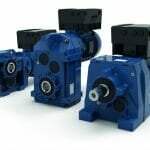IDTechEx have recently released a market research report, “Sensors in the Water and Wastewater Treatment Industries 2020-2030“. In order to create an efficient and optimized system, water and waste-water networks must find quick and decisive answers to many questions – where is the network leaking? Can we accurately predict our customers’ water use? How can our processes be optimized? These questions can be answered by the implementation of sensors: creating a digital, smart, water network. This report from IDTechEx aims to provide a holistic overview of the opportunities available within the future digitization of the water and waste-water network markets.
Digital water networks are beginning to see an increase in interest as the hype around these systems grows. This report encompasses an analysis from a range of water products and companies, forecasts for the water and waste-water pipe networks, and the water and waste-water treatment sectors. These systems are those which make a water network “Digital” or “Smart”, for example, by the remote monitoring and capture of data from water and waste-water pipes. Data can include pressure measurements, leak identification, flow speed, and continuous structure monitoring. The water industry in some countries, such as the UK, has previously been slow-moving to update to new technology. Many countries require companies to hit targets for chemical and leak levels. Digital water technology can help companies meet these targets in the future. IDTechEx predicts that this industry will be over $2Bn by 2030.
As there are many stages within the water and waste-water networks, there are many properties to measure and monitor. This also means that there are many points in the system where data needs to be collected and analyzed to ensure the correct treatment and processes are applied. The market research report from IDTechEx describes the methods used to monitor these areas. In general, there are the following key areas: Storage (e.g. tanks), Pipes and Treatment in both potable (drinking) supply water and waste-water.
Sensors in the water industry have already had an impact on COVID-19. As an emerging technology, digitizing and adding sensors to the water and waste-water networks may have both benefits and hindrances. Hindrance, as companies may not wish to spend large sums on new sensors, pipes, or technology, and the barriers for entry into the water and waste-water networks is already high. The benefit of adopting sensors into the networks outweigh these barriers. There is a real need for remote monitoring; it removes the need for maintenance staff to check pipes as regularly or to collect samples for lab monitoring. It speeds up the identification of pollution events, reducing fines incurred by the water companies. It improves the efficiency of the treatment plants. It provides a better service for customers. A steep investment, but the dividends pay off for many years to come.
The market research report “Sensors in the Water and Wastewater Treatment Industries 2020-2030” includes market forecasts, player profiles, investments, and comprehensive company lists. This report is an essential read for those looking for a deep understanding of the use of sensors in the water and waste-water industries.
For a complete overview of this industry, please refer to the IDTechEx report, “Sensors in the Water and Wastewater Treatment Industries 2020-2030”. For more information on this report, please visit www.IDTechEx.com/digitalwater. This report falls within the AgTechportfolio – see www.IDTechEx.com/Research/AgTech for the full portfolio.
IDTechEx guides your strategic business decisions through its Research, Consultancy and Event products, helping you profit from emerging technologies. For more information on IDTechEx Research and Consultancy, contact [email protected] or visit www.IDTechEx.com.




